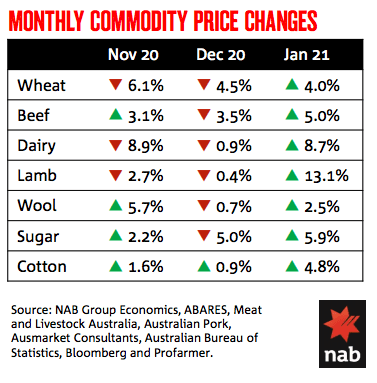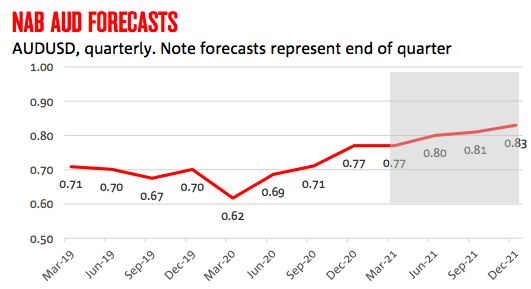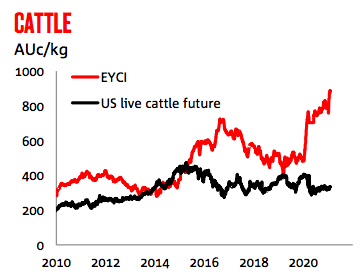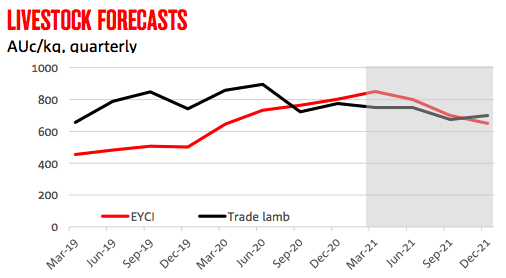DESPITE the challenges of 2020, Australian agriculture is in its strongest position in years with the NAB Rural Commodities Index rising 4.2 percent in January to now be 7.3 percent higher than this time last year.
 The latest NAB Rural Commodities Wrap reports that prices for most commodities and improved seasonal conditions in many regions should be supportive of good producer returns throughout the year.
The latest NAB Rural Commodities Wrap reports that prices for most commodities and improved seasonal conditions in many regions should be supportive of good producer returns throughout the year.
NAB Agribusiness Economist, Phin Ziebell, said while 2021 was expected to deliver another solid year for many, an appreciating Australian Dollar (AUD) and volatile livestock prices would see some downwards pressure on the Index towards the end of the year.
“Underpinning our 2021 forecasts is the AUD forecast track, which points to the AUD climbing to USD0.80 by mid-year and USD0.83 by the end of 2021,” Mr Ziebell said.
“This currency appreciation will likely put some pressure on rural commodity values, with cattle prices likely to be a major driver of this unwinding.
“The Eastern Young Cattle Indicator (EYCI) is now approaching 900c/kg. While it is possible that prices will continue to move higher if Queensland rains deliver, local prices are now out of step with global fundamentals, particularly in light of an appreciating AUD.
“It is entirely normal for Australian prices to be out of step with global benchmarks during times of herd rebuilding, however, if demand eases there is substantial downside risk. On balance, we expect saleyard prices to fall somewhat in the back half of the year.”
Chinese trade barriers were a feature of 2020 and their continuation, escalation or de-escalation is a key question for Australian farmers in 2021.
“With a huge crop to move and China imposing 80 percent tariffs, Australian barley growers have been fortunate to enjoy strong buying activity from Saudi Arabia. While this is only feed barley, the global grain price rally has allowed growers to enjoy reasonable prices,” Mr Ziebell said.
“We see global grain prices remaining elevated, but largely counterbalanced by a higher AUD and the demise of basis. All this adds up to a forecast for Australian wheat in the low $300/tonne range, a respectable price especially factoring in good to excellent yields in the recent harvest.”
NAB’s fertiliser index rose 8.8 percent in January and the feedgrain price index is showing signs of recovery in 2021 following a downward trend in 2020.
Lamb prices moved out of sync with their usual seasonal patterns last year, rising instead of falling during the spring flush. The new year has brought further gains, with trade lamb prices above year-ago levels, however, spring flush price falls are likely to return this year after an absence in 2020.
Wool prices have recovered somewhat from their lows in September last year, with the recovery more pronounced for finer wools, 20 micron and below.
Global Dairy Trade auction results have moved higher in USD terms over the last six consecutive auctions and NAB’s dairy export price indicator moved 4.9 percent higher in AUD terms in January.
Fruit and vegetable prices were mixed in wholesale market data. Fruit prices gained 6.6% while vegetables were off 3% in January. A lack of labour availability to harvest crops continues to be a major concern for the industry.
Click here to download the NAB Rural Commodities Wrap (PDF)






HAVE YOUR SAY